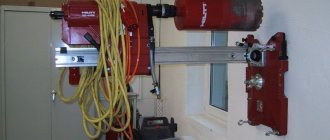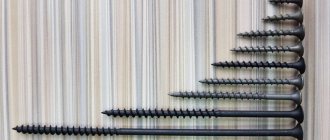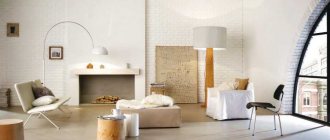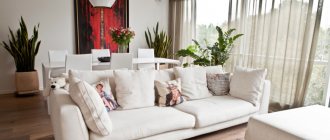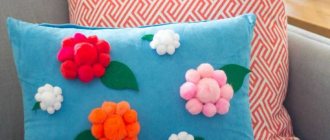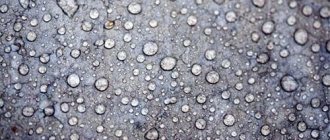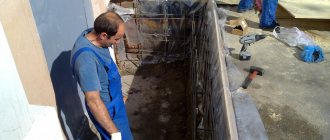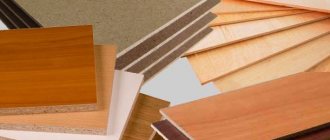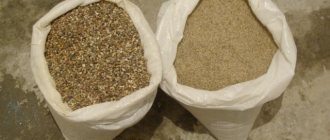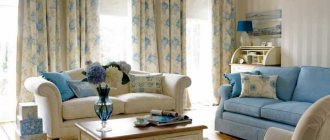Manufacturing process
The composition from which CBPB slabs are produced can, in a sense, be called concrete. Classic cement is used as a binder, and wood shavings are used for filling. Wood made it possible to significantly reduce the density of finished products. In addition, the chips act as reinforcement, allowing the slab to withstand significant tensile forces.
The composition for CBPB includes the following substances:
- water;
- hydration supplements;
- mineralization additives;
- wood shavings;
- Portland cement.
Before starting to prepare the mixture, a filler is prepared for it, which is crushed to the required size. Since the DSP sheet is made up of three layers, the wood shavings are sifted and divided into two parts - small and large. The first fraction is used to make layers on the outer sides, the second for the middle layer.
After this, the mixture is treated with various chemical compounds designed to prevent rotting processes in the wood. The wood chips prepared in this way are mixed with cement and the required amount of water is added.
DSP in warehouse Source yandex.net
To speed up the setting of cement, special additives are introduced into the mixture. To reduce the friction of large chips against each other and facilitate the pressing process, the technological process for manufacturing CBPB allows the introduction of a small volume of fuel oil into the composition. In some cases, it can be replaced by I-20 oil, intended for industrial purposes.
Next, the mixture is poured into special molds. The installation is carried out in three layers - the first layer with small chips, the second with large chips, the third again with small chips. A stack is formed from the filled forms and placed under a cold press. The pressure developed during compression reaches about 6.5 MPa. The compressed forms are fixed with the help of special locks, which allow them to maintain pressure after pressing.
After this, the molds are heated for at least 8 hours. This allows Portland cement to hydrate and set faster. Since wood chips have good elasticity, cement shrinkage is compensated. Therefore, the cement particle board retains its specified dimensions. Removal of locks from molds is also carried out under pressure.
Tongue-and-groove CBPB facilitates installation Source remonstr.ru
The formed products are removed and sent to storage in a buffer warehouse for two weeks. In order for the slabs to fully “ripen”, they are blown with air at temperatures up to one hundred degrees. The final stage of production is cutting to size and polishing.
Application
The main area of use of this material is to increase the thermal insulation properties and sound insulation of premises. Therefore, the material is often used in private residential buildings and in the construction of commercial and industrial facilities.
Cement particle boards are optimally suited for interior and exterior wall finishing and floor preparation for finishing. In addition, the material is often used for arranging interior partitions.
Regardless of the scope of application, DSPs are guaranteed to withstand the service life declared by the manufacturer, which is about 50 years !
Various types and dimensions of slabs
A cement board with wood shavings as filling is manufactured in accordance with the relevant GOST. Two varieties of this finishing material are produced:
- TsSP-1;
- TsSP-2.
Their main difference is the quality of production. TsSP-1 is subject to higher requirements for maintaining dimensional accuracy; it is stronger and the planes are more even. As for the standards for strength, accuracy and thickness compliance, they are ranked separately for each product range. In terms of thickness, DSPs are manufactured from 8 to 40 millimeters, increasing every 2 millimeters.
Both types of plates have the same overall dimensions. Two DSP form factors are available:
- DSP board, dimensions - length 3.2 meters and width 1.2 meters;
- The dimensions of the DSP are 3.6 meters in length and 1.25 meters in width.
The brands of slabs described above are “basic” because there are several other materials with similar components and properties.
TsSP-1 Source twimg.com
Fibrolite
It is characterized by sufficient softness and low density. This is due to the fact that not shavings, but fibers – “wood wool” – are used as filling. Fibers give higher fiber. This composite is used for sound insulation and insulation.
Arbolit
This composite is classified as light category concrete. Filled with wood chips, shavings, chopped reeds or straw. It is not designed for high loads and is therefore used for the construction of one- or two-story houses, for insulation or as internal walls.
Xylolite
It perfectly resists moisture, since special Sorel cement is used as a binder in this material. Xylolite is used for cladding structures exposed to high humidity - floors, roofs and others.
Areas of use of DSP
When building frames, it is important to accurately select the dimensions of the DSP, since the material consumption and strength of the structure will depend on this. In addition, the DSP goes:
- On permanent formwork,
- For ventilated facades,
- On a base for various types of floor coverings,
- For the production of sandwich panels,
- On a continuous sheathing,
- To create fences.
Main characteristics
For cement particle board, the characteristics and application are mainly governed by the component composition of the source materials. Overall, it all depends on their balance. For example, the weight of cement mortar is partially offset by lighter shavings. However, there are several key indicators, based on which a CBPB board can be selected with characteristics that meet specific requirements.
TsSP-2 Source pilomaterial-stroi.ru
See also: Catalog of companies that specialize in the construction of houses using frame and frame-panel technology
Density and weight
The average density of this material is about 750 kilograms per cubic meter. Extreme indicators range respectively from 1100 kilograms to 400 kilograms per cubic meter. This density is much lower than that of most building materials made using cement. The weight of the slabs is about 42-54 kilograms with a thickness of 10 millimeters and dimensions of 3.2 by 1.2 meters.
Biological stability and moisture resistance
Treatment with special compositions of wood filler allows the boards to perfectly resist biological effects in the form of mold and rot. Moisture resistance is ensured by the use of Portland cement in the material. Despite prolonged immersion in water, the material absorbs no more than 16% of moisture from its mass, and swelling does not exceed 1.5%.
Resistance to sub-zero temperatures
Since the boards have low absorbency, this allows them to successfully resist sudden temperature changes. Resistance to frost is about 50 cycles of freezing and thawing. This makes it possible to use the material on objects without heating, provided that moisture accumulation in the slabs is prevented.
DSP on the facade of a frame-panel house Source tamak.ru
Thermal conductivity
Since in CBPB a larger volume is occupied by wood chips, the slab, by definition, turns out to be porous. Thanks to this structure, the thermal conductivity of the slabs is two orders of magnitude higher than that of brick, and almost two orders of magnitude higher than that of plasterboard. DSP does not fully qualify as insulating materials, but their use seriously affects the final insulation of the room.
Vapor permeability
The vapor permeability of these slabs is almost the same as concrete. When designing multilayer walls, this indicator must be taken into account. The slab can successfully serve as a vapor-limiting loop in buildings, protecting them from dampness and improving insulation.
High temperature resistance
The sum of fireproof parameters makes the material practically non-flammable and safe. When using slabs on objects, their fire hazard class is reduced. The fire resistance of structures is significantly increased.
Ecological cleanliness
Modern production of building materials widely uses synthetic raw materials; at the same time, more and more attention is being paid to the environment. Compromises have to be sought to solve this difficult problem, but DSP has no environmental disadvantages. In its production, only natural ingredients are used.
Finishing of DSP indoors Source cspkaz.kz
On the contrary, substances from its composition, for example, formaldehyde from tree resin, compensate for the effects of toxic compounds. Mineral additives introduced into the board protect it from rotting and mold; for this reason, DSP is an environmentally friendly material.
How to cut this material
It’s worth clarifying right away that it is better to cut cement particle boards in production shops: the work is very dusty and requires a special tool for an even cut. At home, you can use the following devices:
- Hand cross saws.
- Machine hacksaws.
- Circular saws.
- Bulgarians.
- Jigsaws.
The working surface of the tool must be made of carbide materials, the rotation speed of circular saws: no more than 200 rpm .
To minimize room contamination and reduce the amount of dust, it is recommended to spray the surface of the material being cut with water and prepare a vacuum cleaner to suck up fine particles.
Areas of application
The areas of use of these plates directly depend on the qualities described above. The range of possibilities for the practical use of this building material is quite extensive, since the characteristics of CBPB complement each other, enhancing the overall effectiveness of the material. You can count on one hand the building materials with such indicators as:
- moisture resistance;
- light weight;
- non-flammability;
- strength;
- environmental Safety.
And all these characteristics are combined in one composite.
Sheathing of a frame house with DSP Source errgo.ru
What’s even more attractive about the slabs is their form factor. Rectangular sheets of a certain thickness are very convenient for marking, calculations and subsequent installation. The high manufacturability of the material makes it possible to speed up construction work. Since the installation of slabs does not require special qualifications, even a worker who does not have special knowledge can learn to work with them.
There is no need to use various building mixtures during the work. Everything is attached “dry” using fittings in the form of self-tapping screws and the like. The dimensions of the sheets without cutting make it possible to cover a decent area of the treated surface in one cycle.
Walls
These slabs serve as an excellent material used for wall decoration. At the same time, both monolithic and frame-type structures can be sheathed. High resistance to fungi and decay allows the composite to be successfully used for interior finishing work on construction projects. The moisture resistance of the slabs makes it possible to sheathe basements.
Sheathing of a change house from DSP boards Source yaplakal.com
Application area
Regarding the scope of application, it is necessary to highlight the sphere of private and capital construction. A private developer can use this material everywhere, from finishing floor surfaces to finishing walls. DSP boards for flooring have found their application.
They are able to withstand heavy loads and are easily processed using special paints. They do not disturb the interior to some extent; on the contrary, they give it a finished look. The main thing is to carry out the installation correctly, since if the technological process is violated, there is a possibility of losing the aesthetic appearance, as well as reducing the service life of the slab.
As for other areas of application, they are used for arranging the foundation. This is the so-called permanent formwork, with which the frame is made. The slabs are cheap, so it is convenient to use them here and leave them for later use.
They will be easy to finish on the outside, which in the future will not disrupt any of the aesthetics of the house’s appearance. Frame technology also involves the use of DSP boards as the basis for future walls and ceilings. I also use DSP boards for the partitions to construct the frame.
DSP is used in the construction of frame houses
Today they are used in frame-type houses, and where they are used to hem ceilings, and they can also be used for roofing structures with subsequent finishing with soft material. These slabs are used to hem the back side of stairs, sew up communication niches, make blind areas and paths in the garden, and arrange subfloors.
The most important thing is to know the dimensions of the slab . For the ceiling, for example, the thinnest material is suitable, since it will fulfill its task of arranging the base even with the smallest thickness. Otherwise, the floor needs a thicker base, since its resistance to loads should be maximum. The same can be applied to formwork.
Video description
For a clear overview of finishing the façade with DSP slabs, watch this video:
Roofs
This building material is successfully used in the installation of flat roofs and can be used for the construction of serviceable roofs. The slabs are mounted on top of the heat-insulating layer, and waterproofing is fixed on top of them. The material, due to its sufficient rigidity, well protects the insulation from the effects of mechanical loads.
You can not only walk on such roofs, but even use them as work platforms. As a rule, this material is used to cover roofs on which open cafes or balconies with seating areas are installed. Taking into account the expected loads, the thickness of the composite can be 20 millimeters or more.
DSP roofing Source build2last.ru
How to paint a DSP board
To give DSP boards an attractive appearance, the simplest way is painting. After appropriate preparation of the surface, two layers of paint are applied using a roller or spray gun. Most often, in order to paint DSP, they use:
Acrylic paints
. This paint has good adhesion and is highly wear-resistant. If financial capabilities allow, it is better to use paints that contain a solvent, but water-soluble facade acrylic paints, if applied correctly, will last from 3 to 5 years.
Latex paint
. This coating is resistant to alkaline and weak acid solutions and is easy to wash and mechanically clean with detergents. Besides. You can do the painting work yourself, which will save you a significant amount.
Silicate paint
. The use of this type of coating has high adhesion, their vapor permeability provides optimal conditions for air circulation, which prevents the appearance of mold and other fungi. The coating is resistant to weather conditions and detergents, and its service life will satisfy even the highest requirements.
Before you begin painting DSP, it is necessary to take into account that the use of alkyd paints is undesirable, since direct contact with alkalis may cause cracking and peeling of the coating.
Video description
About fastening the DSP to a wooden floor - in the following video:
Formwork
This composite has proven itself to be excellent when installing permanent formwork. In most cases, in the construction of monoliths, the formwork is removed after the concrete has set and the walls are finished with additional materials. DSP simplifies this process by becoming part of the wall and immediately providing a smooth surface ready for painting. The need for plaster, in this case, disappears.
Permanent formwork made of CBPB Source tildacdn.com
Garden paths
A rather unusual use of the material is the arrangement of garden paths. Meanwhile, this decision is not the worst. The capabilities of the slabs allow them to be laid on a prepared sand bed without fear of mowing and cracking. Of course, to compensate for seasonal soil movements, it is necessary to prepare a high-quality drainage layer.
Characteristics of DSP
The material contains 24% wood chips, 8.5% liquid, and 65% cement, which ensures the durability and strength of the slab. In addition, among the ingredients there are 2.5% hydration impurities such as liquid glass and aluminum sulfate. Depending on the floor parameters, you can choose slabs that have dimensions of 3200 x 1250 mm, while the thickness can vary between 10-40 mm. But, according to the standards, the slab can be manufactured with other parameters; deviations depend on the thickness.
Briefly about the main thing
DSP board is a modern finishing material.
It is made of wood and cement, which provides good fracture and tensile strength.
The scope of use is very wide - from finishing walls and facades, to using them as floors for flat roofs.
The material is relatively light in weight, after processing it shows good bio- and moisture resistance, is frost-resistant, vapor-tight and resistant to high temperatures. No synthetic types of raw materials are used in production, therefore CBPB boards are considered environmentally friendly.
As a result, DSP is quite promising and is systematically increasing its presence on the market. High performance characteristics and ease of processing of the material are expanding the scope of its application every day.
Ratings 0
Advantages and disadvantages
Let's start with the positive aspects of the material:
- This is an environmentally friendly material that, under the influence of changing humidity and temperature, does not emit substances harmful to humans;
- the slabs withstand the most severe frosts well: they do not crack or delaminate;
- good moisture resistance indicators allow them to be used when facing any types of surfaces;
- sufficiently high load-bearing performance;
- DSP boards can be used in combination with any other building materials;
DSP sheets are very easy to drill
- they are easy to process: drilling, sawing;
- ease of installation work;
- the possibility of finishing the sheets themselves with any materials;
- using DSP sheets, leveling operations are carried out;
- Based on their thermal insulation properties, they can be classified as thermal insulation materials.
The best option for finishing the DSP boards themselves is painting
Now the disadvantages:
- The weight of the DSP boards is decent; even a small sheet of 10 mm thickness weighs more than 50 kg. It is beyond the power of one person to lift it and install it where required. And lifting material to the upper floors will require the use of lifting equipment, which increases the cost of the work performed.
- If CBPB panels are used outdoors, their service life is reduced to 15 years.
The weight of cement-bonded particle boards is large, so it will take two people to lift it
Types of DSP
DSP board, the use of which today, as already mentioned, is becoming increasingly popular, is produced on modern equipment in several varieties. These are, for example, slabs whose thickness is only 4 mm. The resulting material does not require grinding, which, when done, causes an increase in cost. Slabs that have smooth embossing are becoming increasingly popular. They contain small elements, the size of which increases closer to the center of the canvas. Using this material you can get a floor that will look like natural stone. That is why the canvas does not require additional finishing after installation.
